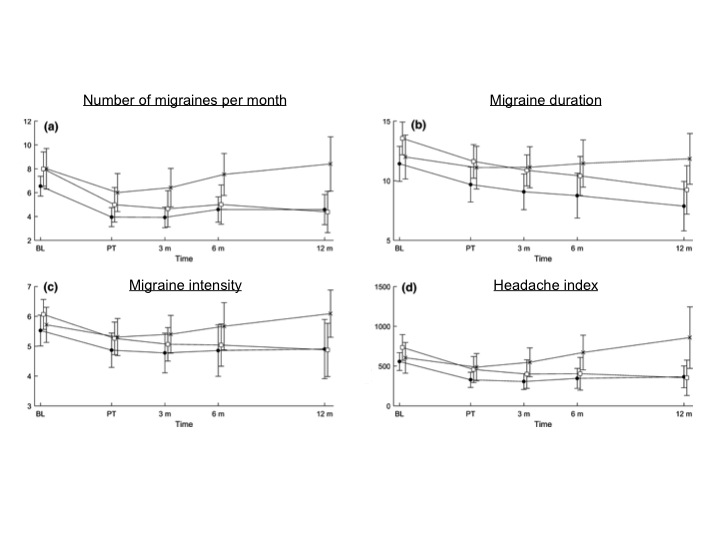
Anyone who has suffered from migraines is aware of the limitation of the treatment options out there. With the exception of prescription medications that go a step beyond the old standby of an Excedrin with a cup of coffee - help is limited.
So, it's easy to understand why people reach for measures that they think may be helpful, like chiropractic, even without any evidence to support it. However, a recent study published in the European Journal of Neurology shows that, for migraines, chiropractic spinal manipulative therapy (CSMT) is no better than a placebo.
The study, conducted over a three month treatment period followed by a 12 month follow up, included 104 people who suffer from at least one migraine a month (migraineurs). It was a was a three-armed, single-blinded, placebo, randomized controlled trial (RCT). What does that mean?
The "three-armed" description means that there were three groups; one group that received CSMT, one that received the placebo treatment (a mock CSMT - more on this later) and a control group that continued with pharmacological treatment, but received no CSMT or other treatments.
The "randomized" description means that people were placed into the three groups randomly and the "single-blinded" description indicates that the researchers were aware of which patients were placed into each group, although the patients remained unaware.
Let's dig a bit further into the difference between the patients receiving actual CSMT and those receiving the placebo treatment. The CSMT is described as the Gonstead method (used by 59% of chiropractors) which consists of "high-velocity, low-amplitude, short-lever spinal with no post-adjustment recoil that was directed to spinal biomechanical dysfunction (full spine approach) as diagnosed by standard chiropractic tests." The placebo group received "broad non-specific contact, low-velocity, low-amplitude sham push manoeuvre in a non-intentional and non-therapeutic directional line of the lateral edge of the scapula and/or the gluteal region." All of the contact were made outside of the spinal column and no joint cavitations occurred.
The patients kept a headache log throughout the duration of the study. The researchers looked at
- Number of migraines per month
- Migraine duration
- Migraine intensity
- Headache index
- Medicine consumption
The results are shown in the graph below. When looking at the data, note what each symbol means.
- control group is indicated by (×)
- chiropractic spinal manipulative therapy is indicated by (●)
- placebo - sham manipulation is indicated by (□)

Although it may be hard to see the symbols, the interpretation of the data is clear. Although the graphs have a lot of time points on them, the actual study is really represented in just the first two time points - BL (baseline) and PT (post-treatment.) The points after that indicate 3 months, 6 months, and 12 months after treatment.
When looking at those first two timepoints, baseline to post-treatment, the number of migraines per month were significantly reduced in all three groups. That continued throughout the 12 month post-treatment reporting period for the (□) placebo and (●) CSMT groups, but not in the (×) control group.
For the other three criteria, there was a significant reduction from baseline to post-treatment in both the CSMT and placebo groups.
The main conclusion is that whether the patients were worked on by a chiropractor or had a sham technique, they reported an improvement in migraines. Or, as the authors put it, "the effect of chiropractic spinal manipulative therapy observed in our study is probably due to a placebo response." So, go ahead and have a toddler walk on your back - it's the same as a trained chiropractor!
But, I would argue that, although the results are important to highlight, the more important aspect of this work is the work itself. A three armed, placebo RCT was done to analyze chiropractic efficacy and it was done well. This is the first study of its kind and it yielded results that are able to scientifically analyze the impact of chiropractic manipulations on migraines.
One of the challenges in convincing people that chiropractic spinal manipulative therapy (CSMT) is useless is the lack of well done research studies. It's hard to make an argument against something when there is not a lot of solid data. Hopefully, with more studies like this in the pipeline, the scientific community will be able to convince people to stop wasting their money on something that is no better than a placebo.



